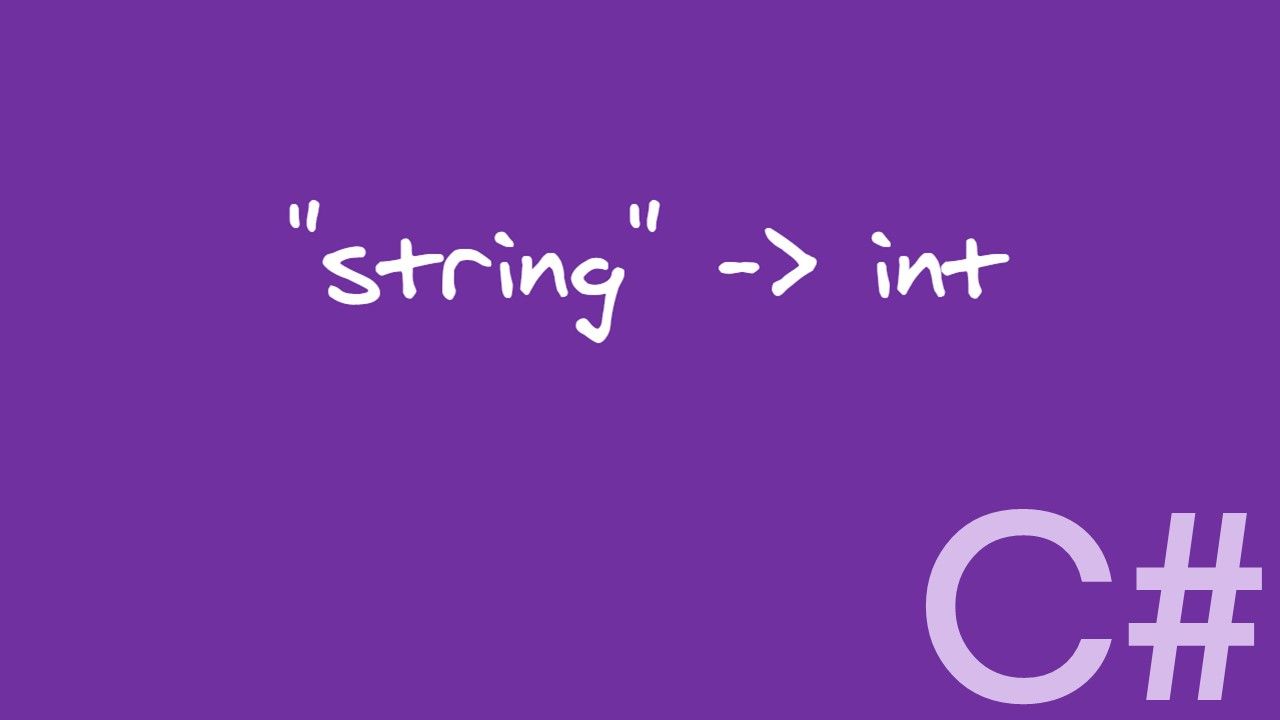Converting a string to an integer is common practice when you're dealing with user input, JSON data, API responses, or regular expressions. But what's the right way to do it for each scenario?
In this article, I'll explain three ways to convert a string into a number in C# and I'll show you how to choose the right method for your scenario.
Determine the source of your data
First of all, let's see where your data is coming from. It's easy to convert the string "123" into an integer, but in the real world, it's never that simple.
The "number string" can come from a database, text file, an API, or a user of your app. So how confident are you it's really a number?
| Data source | Confidence | What can happen |
|---|---|---|
| User input | 🙁 | "1.23" "hello" |
| JSON data | 😐 | "123.1" "" |
| API response | 😐 | "11,7" "" |
| Regular expression match | 🙂 | invalid expression allowing not only numbers |
How big can your number get?
You also need to know how big your target number can be. In the scope of this article, we're talking about Int. That is usually considered Int32 (int), but you can also use Int16 (short) and Int64 (long) depending on how large the numbers are that you expect.
| Type | Largest number |
|---|---|
Int16 (short) |
32767 (Int16.MaxValue) |
Int32 (int) |
2,147,483,647 (Int32.MaxValue) |
Int64 (long) |
9,223,372,036,854,775,807 (Int64.MaxValue) |
int.Parse(String) – input confidence: high 🙂
Use int.Parse when you are sure the input is really a number. It can also parse numbers in culture-specific or other widely-known formats, but you need to know the exact format:
| Signature | Output |
|---|---|
int.Parse("123") |
123 |
int.Parse("") |
throws FormatException |
int.Parse(null) |
throws ArgumentNullException |
int.Parse("123,000") |
throws FormatException |
int.Parse("123,000", System.Globalization.NumberStyles.AllowThousands, new System.Globalization.CultureInfo("en-US")) |
123000 |
Convert.ToInt32(String) – input confidence: medium 😑
Convert is very similar to int.Parse with one exception: null is converted to 0 and does not throw an exception. It can also handle other input data types (not just strings):
| Signature | Output |
|---|---|
Convert.ToInt32("123") |
123 |
Convert.ToInt32("") |
throws FormatException |
Convert.ToInt32(null) |
0 |
Convert.ToInt32("123,000") |
throws FormatException |
Convert.ToInt32("1.23") |
throws FormatException |
Convert.ToInt32(1.23) |
1 |
Note: You can use Convert.ToInt32 to remove number precision behind a decimal point. However, to ensure good code readability, you should use Math.Floor to achieve this task.
Int*.TryParse(String, Int32) - input confidence: low 🙁
Use TryParse whenever you don't trust your data source. For example, when you're getting user input or parsing and validating data from submitted forms:
| Signature | Output |
|---|---|
int number;bool convertible = Int32.TryParse("123", out number) |
number = 123 convertible = True |
int number;bool convertible = Int32.TryParse("hello", out number) |
number = 0 convertible = False |
int number;bool convertible = Int32.TryParse("", out number) |
number = 0 convertible = False |
Note: You can also move the number definition to the TryParse method call by typing out int number.
The most typical example is with Console.ReadLine:
while (!Int32.TryParse(Console.ReadLine(), out int number))
{
Console.WriteLine("Please input number");
}
Console.WriteLine(number);
Conclusion
In this article, I showed you three ways to convert a number to a string in C# and explained how to decide which method to use based on the source of your data and the confidence you have in it.
If you don't want to miss my new articles, follow me on Twitter.

